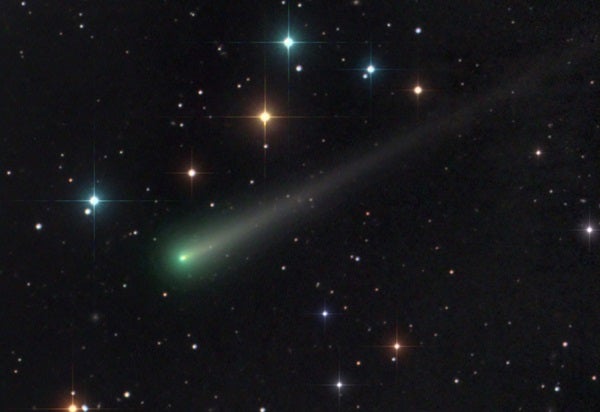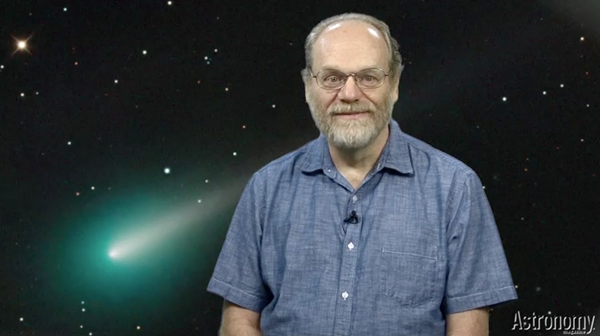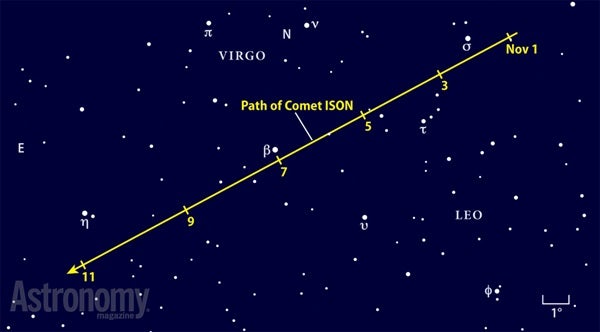For complete coverage of Comet ISON, visit www.Astronomy.com/ISON.
On the 1st, ISON rises more than four hours before the Sun and stands 30° above the eastern horizon at the start of morning twilight. It lies in southern Leo the Lion, 12° southwest of 2nd-magnitude Denebola. But the comet will be easier to track down by scanning some 7° south-southeast of magnitude 1.5 Mars. A slim crescent Moon rises more than two hours after ISON.
If you have exceptionally clear skies this morning, you might be able to trace the comet’s tail to Mars. In fact, the comet likely will sport two tails, one of charged particles and the other primarily made of dust.
With each passing day, the comet shines a little brighter, rises a few minutes later, and slips slightly lower as morning twilight starts to paint the sky. During November’s first week, ISON should brighten by a full magnitude, appearing 2.5 times brighter than on the month’s first morning.
ISON’s quickening pace means that no single constellation can hold it for long. After spending all of October and the first few days of November in Leo, it reaches that constellation’s border with Virgo the Maiden on November 5. The comet remains within the Maiden’s grasp until the 22nd largely because this is the sky’s second-largest constellation, and then it moves into Libra the Scales.












